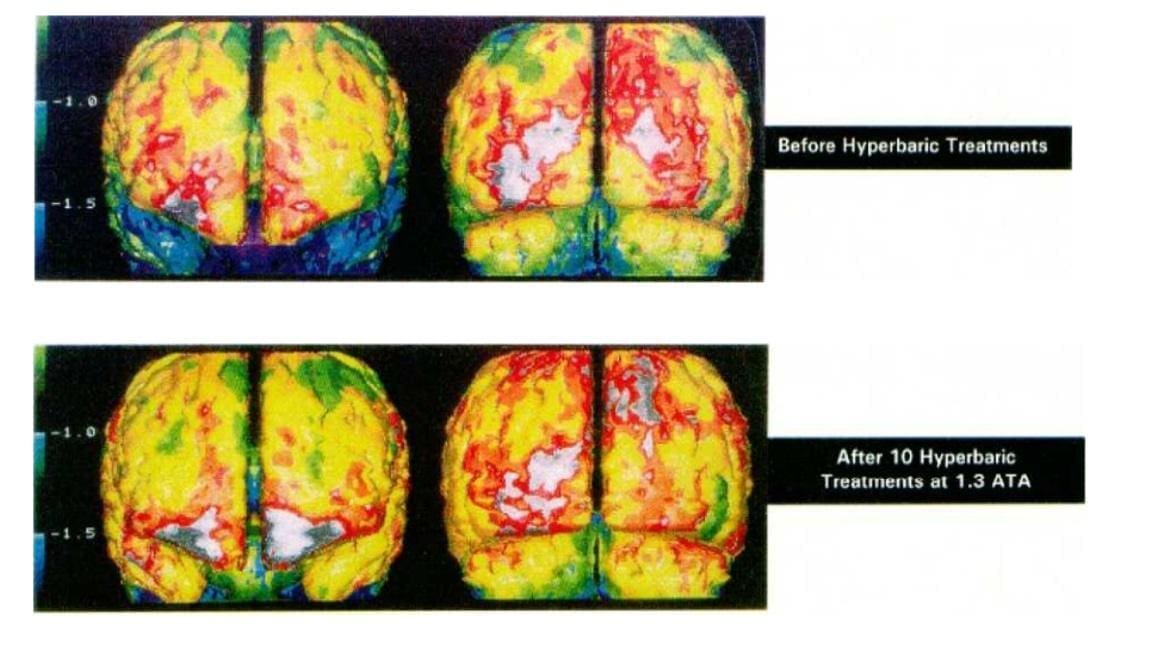December 6, 2023

Dr. Gunnar Heuser, a toxic
exposure specialist, documented
results of a series of hyperbaric
treatments on 9 patients suffering
from Impaired Brain Function. The
purpose was to study the effects of
1.3 ATA of hyperbaric therapy on
those patients.
His patients
included individuals who suffered
from impairment to brain function
such as memory and balance due to
years of exposure to a variety of
chemicals, pesticides and solvents.
Some patients had developed
attention deficit disorder and may
well have been experiencing
disabling effects that altered their
quality of life, It is important to
note that MRI scans confirmed that
there was no cell death in those
patients, only loss of function.
Discussion
The benefits of treating toxic exposure patients with Hyperbaric Therapy appear to be very positive.
I nitial results indicate that Hyperbaric Therapy has a demonstrable and positive effect on some
symptoms such as short term memory loss and balance. This study and additional research will
add to our understanding of the exciting possibilities of Hyperbaric Therapy.
See Full Study Here
Share on:
A free, open discussion group to explore hyperbaric oxygen therapy, compare home chamber brands, access expert info, and get exclusive member discounts.